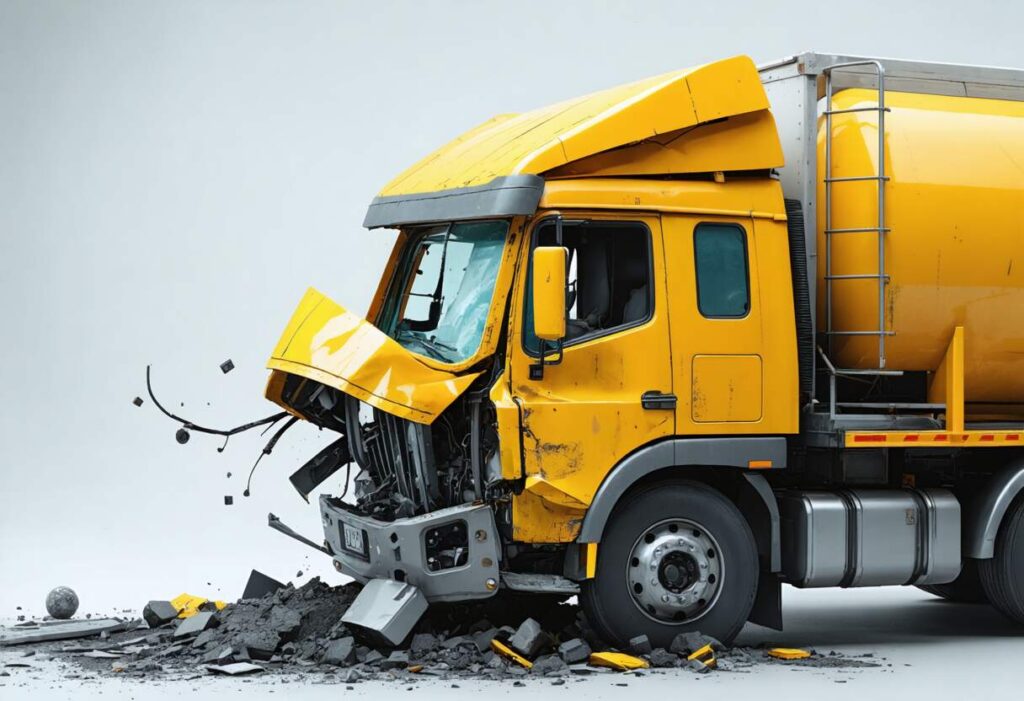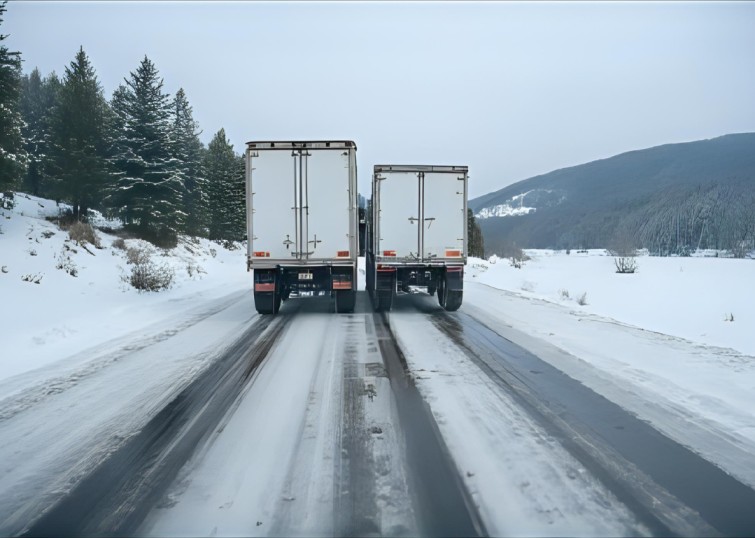TL;DR
In the event of a truck accident involving a hazardous materials vehicle, prioritize safety by evacuating the area, alerting emergency services, and containing any spills. Follow legal protocols, document the incident thoroughly, and seek professional assistance to manage environmental and health risks effectively.
Key Highlights
- Ensure Personal Safety: Evacuate the immediate area to prevent exposure to hazardous substances.
- Alert Authorities: Call emergency services and inform the hazardous materials response team.
- Contain Spills: Use available materials to contain any leaks or spills to minimize environmental impact.
- Provide First Aid: Administer necessary medical assistance to injured individuals while awaiting professionals.
- Document the Incident: Record details of the accident, including the type of hazardous materials involved and the circumstances leading to the crash.
- Consult Experts: Engage truck accident lawyers and environmental experts to navigate the aftermath and ensure compliance with regulations.

Truck accidents involving hazardous materials present complex challenges that extend beyond typical collision responses. According to the Federal Motor Carrier Safety Administration (FMCSA), hazardous materials incidents account for a significant portion of transportation-related emergencies, posing risks to both public safety and the environment. These incidents demand specialized handling to prevent escalation and ensure effective resolution.
In Georgia, specific regulations govern the transportation and management of hazardous materials. The Georgia Hazardous Waste Management Act outlines protocols for reporting spills and accidents, emphasizing the importance of timely and accurate communication with state authorities. Compliance with these laws is crucial to mitigate legal repercussions and environmental damage.
Addressing a truck accident carrying hazardous materials requires a coordinated approach that prioritizes immediate safety, regulatory adherence, and comprehensive documentation. Understanding the proper steps to take can significantly influence the outcome, safeguarding lives and property while ensuring responsible management of hazardous substances.
Take Immediate Safety Measures
When a truck carrying hazardous materials is involved in an accident, the first priority is ensuring the safety of all individuals in the vicinity. Follow these steps to manage the situation effectively:
- Evacuate the Area: Move away from the accident site to avoid exposure to potentially dangerous substances. Establish a safe perimeter to keep bystanders at a distance.
- Avoid Contact: Do not touch or move the hazardous materials unless you are trained and equipped to do so. Untrained individuals can inadvertently increase the risk of contamination or injury.
- Assess the Situation: Quickly evaluate the extent of the accident, identifying any immediate threats such as fires, leaks, or unstable vehicles.
Securing the Scene
Once personal safety is ensured, the next step is to secure the accident site to prevent further complications:
- Limit Access: Restrict entry to authorized personnel only, including emergency responders and hazardous materials experts.
- Use Barriers: Employ cones, barriers, or natural boundaries to contain the area, reducing the risk of additional accidents or exposure.
- Monitor the Environment: Continuously observe the scene for changes, such as increasing temperatures indicating a fire risk or expanding spills.
Notifying Authorities
Effective communication with the appropriate authorities is critical in managing a hazardous materials accident:
- Call Emergency Services: Dial 911 to report the accident, providing detailed information about the location, the nature of the hazardous materials, and any immediate dangers.
- Inform the Hazardous Materials Response Team: Contact the local or state hazmat team to ensure specialized resources are dispatched promptly.
- Notify Environmental Agencies: Reach out to relevant environmental protection agencies to report potential impacts on air, water, and soil quality.
Managing Hazmat Risks
Handling hazardous materials requires specific knowledge and equipment to minimize risks:
- Contain Spills: Use absorbent materials or specialized containment systems to manage any leaks, preventing substances from spreading.
- Control Fire Hazards: If there is a fire risk, use appropriate firefighting techniques tailored to the type of hazardous material involved.
- Ventilate the Area: Ensure adequate ventilation to disperse harmful fumes, reducing the risk of inhalation by responders and nearby individuals.
Documenting the Incident
Properly collecting evidence after a truck accident is critical for legal, insurance, and environmental claims. Here are essential evidence to collect at the scene of the accident:
- Record Details: Note the time, location, weather conditions, and sequence of events leading to the accident.
- Photograph the Scene: Take clear images of the accident site, including vehicle positions, spills, and any visible damage.
- List Involved Parties: Document the names and contact information of drivers, witnesses, and emergency responders present at the scene.
Legal and Insurance Considerations
Navigating the aftermath of a hazardous materials truck accident involves understanding legal obligations and insurance processes:
- Comply with Reporting Requirements: Adhere to state and federal regulations regarding the reporting of hazardous materials incidents to avoid penalties.
- Consult Legal Professionals: Engage with hazardous material truck accident attorneys who specialize in transportation and environmental law to address liabilities and legal claims.
- Coordinate with Insurance Providers: Inform your insurance company promptly, providing detailed documentation to facilitate the claims process and ensure coverage.
Conclusion
Handling a truck accident involving a hazardous materials vehicle demands prompt and informed actions to ensure safety, compliance, and effective resolution. By prioritizing immediate safety measures, securing the scene, and notifying the appropriate authorities, you can mitigate the risks associated with such incidents. Thorough documentation and professional consultation further support the management of legal and environmental responsibilities. Taking these steps not only protects lives and property but also upholds regulatory standards and environmental integrity. If you or someone you know is affected by a hazardous materials accident, reaching out for a free case evaluation can provide the necessary guidance and support to navigate the complexities of the situation. Get in touch with our trucking accident lawyers today for free case evaluation.



